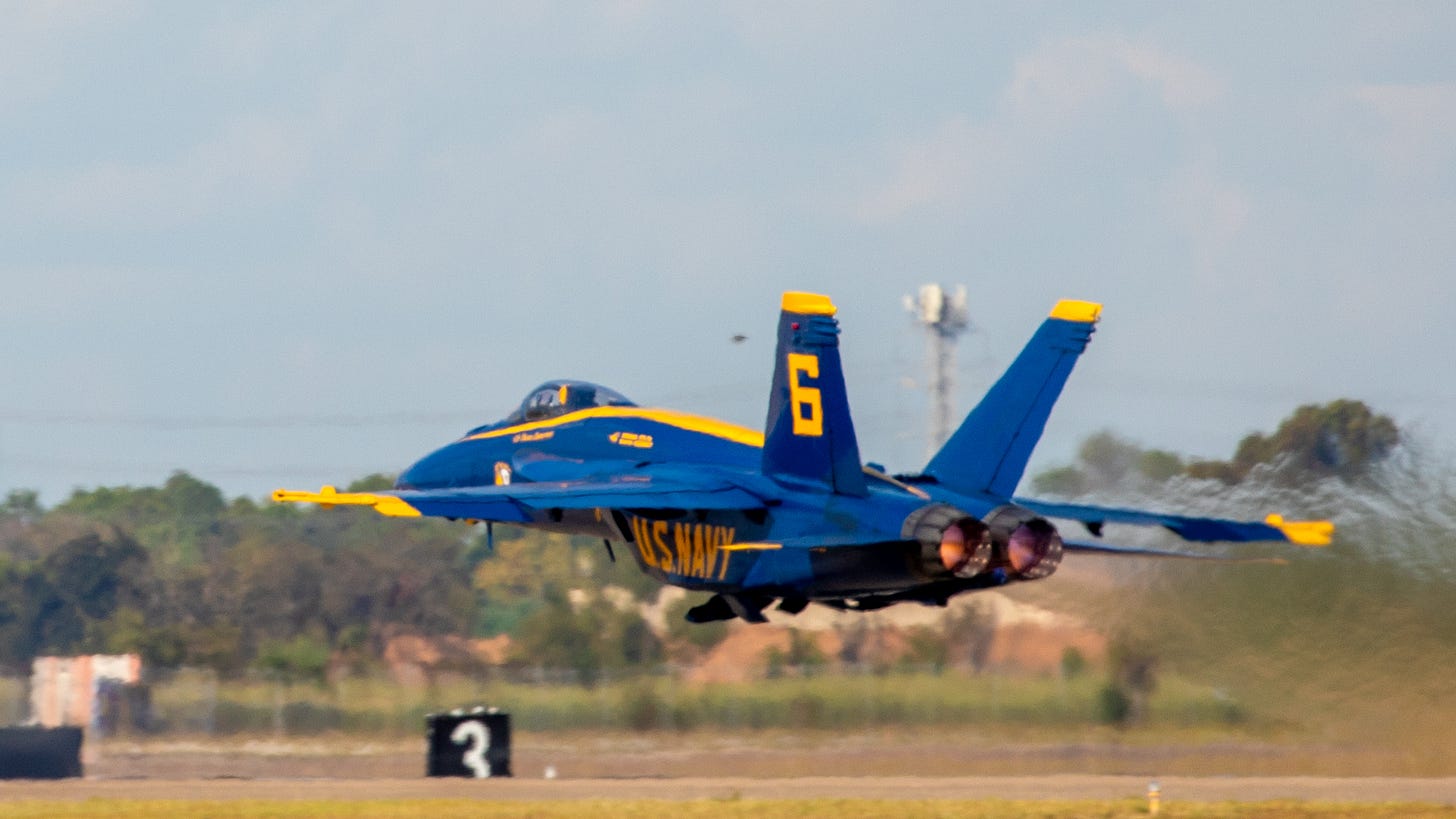The fallout from the F-35B crash and the end of an era
Findings from the investigation of the Lightning mishap and the end of an era for Strategic Air Command
“You’ve never been lost until you’ve been lost at Mach 3.”
– Paul F. Crickmore
Mission Briefing:
You may remember the F-35B that crashed last September, apparently the Marine Corps pilot who ejected from the jet has now lost command of his unit. The incident occurred during a training mission over South Carolina when the pilot faced an emergency and was forced to eject. However, the story took a strange twist: the 5th generation fighter continued to fly on its own for nearly an hour before ultimately crashing in a rural area.
Following a thorough investigation, the Marine Corps decided to relieve the pilot of command, a move that highlights the military's high standards of accountability, particularly with advanced, high-stakes assets like the F-35B. The Marine Corps has not disclosed specific reasons for the decision but noted that it was made based on a loss of trust and confidence in the pilot’s ability to lead. Below is a video I made on the incident last year:
This incident also underscores the F-35B's unique capabilities and the challenges that come with operating one of the world’s most advanced—and complex—fighter aircraft. The jet's combination of stealth, supersonic flight, and vertical landing abilities make it a crucial component of the Marine Corps’ air power, but its cutting-edge technology also requires precise handling and decision-making under pressure.
Each F-35B costs roughly $100 million, making it one of the most expensive variants in the F-35 lineup. The total F-35 program has an estimated lifetime cost exceeding $1.7 trillion, including development, procurement, and maintenance over the aircraft’s projected 60-year lifespan. With such a high investment, both the capabilities and risks associated with the F-35 are under constant scrutiny. This event serves as a reminder of the critical importance of training and decision-making for those who operate these advanced aircraft.
This week in aviation history
4 November 1954 the Strategic Air Command retired its last B-29 Superfortress, sending the legendary bomber to the aircraft storage facility at Davis-Monthan Air Force Base in Tucson, Arizona. This marked the end of an era for the B-29, a groundbreaking aircraft that played a crucial role in World War II and continued serving through the Korean War.
The B-29 Superfortress was not only one of the most technologically advanced bombers of its time but also one of the most complex. Developed under tight wartime pressure, its design and production required the concerted effort of thousands of engineers and production workers across the United States. Boeing manufactured the B-29 at multiple locations, including Seattle and Renton, Washington, and Wichita, Kansas, while Glenn L. Martin Company and Bell Aircraft Corporation also joined in production. A total of 3,966 B-29s were built, including specialized models for various missions.
The B-29 was a massive machine, with a length of 99 feet and a wingspan of over 141 feet. It required a crew of 11 to 13 men and was powered by four Wright Cyclone R-3350 engines, each producing up to 2,200 horsepower for takeoff. With a maximum speed of 357 miles per hour at 30,000 feet and a range of over 3,200 miles, it could reach targets deep within enemy territory, making it an effective long-range bomber. The aircraft's two bomb bays could carry a payload of up to 20,000 pounds, and it boasted an innovative defensive system with 12 remotely controlled Browning M2 .50-caliber machine guns across four turrets, plus a manned tail gun for extra protection.
Beyond its primary role as a heavy bomber, the Superfortress was adapted for other missions, including aerial reconnaissance (designated as F-13), weather reconnaissance (WB-29), and in-flight refueling (KB-29), proving its versatility and reliability.
The legacy of the B-29 lives on today, with only two airworthy examples remaining: *Fifi* and *Doc*, both meticulously restored and flown by dedicated crews. After years of restoration, *Doc* received its FAA Special Airworthiness Certificate in May 2016, making it a living piece of aviation history. These aircraft serve as flying tributes to the engineers, pilots, and crews who kept the B-29 flying through some of history's most challenging missions.
The retirement of the last operational B-29 in 1954 marked the close of a significant chapter in military aviation, but its legacy endures as a symbol of American ingenuity and the power of teamwork in achieving seemingly impossible feats.
In Case You Missed It
Here’s a recap of this year’s Wings Over Houston Airshow:
Photo Outlet
Over the next year I will be releasing some of the best photos I took at the airshow, here is the first series:
Feel free to use these photos however you like, if you choose to tag me, I am @pilotphotog on all social platforms. Thanks!
Post Flight Debrief
Thanks for reading! Want to keep getting this newsletter straight to your inbox? Just sign up using the form below—it's that easy! This newsletter will always be free for everyone, but if you’d like to support the mission and unlock even more, consider becoming a paid subscriber. Either way, I’m grateful for your support. Sign up now and stay in the loop!
-Tog







